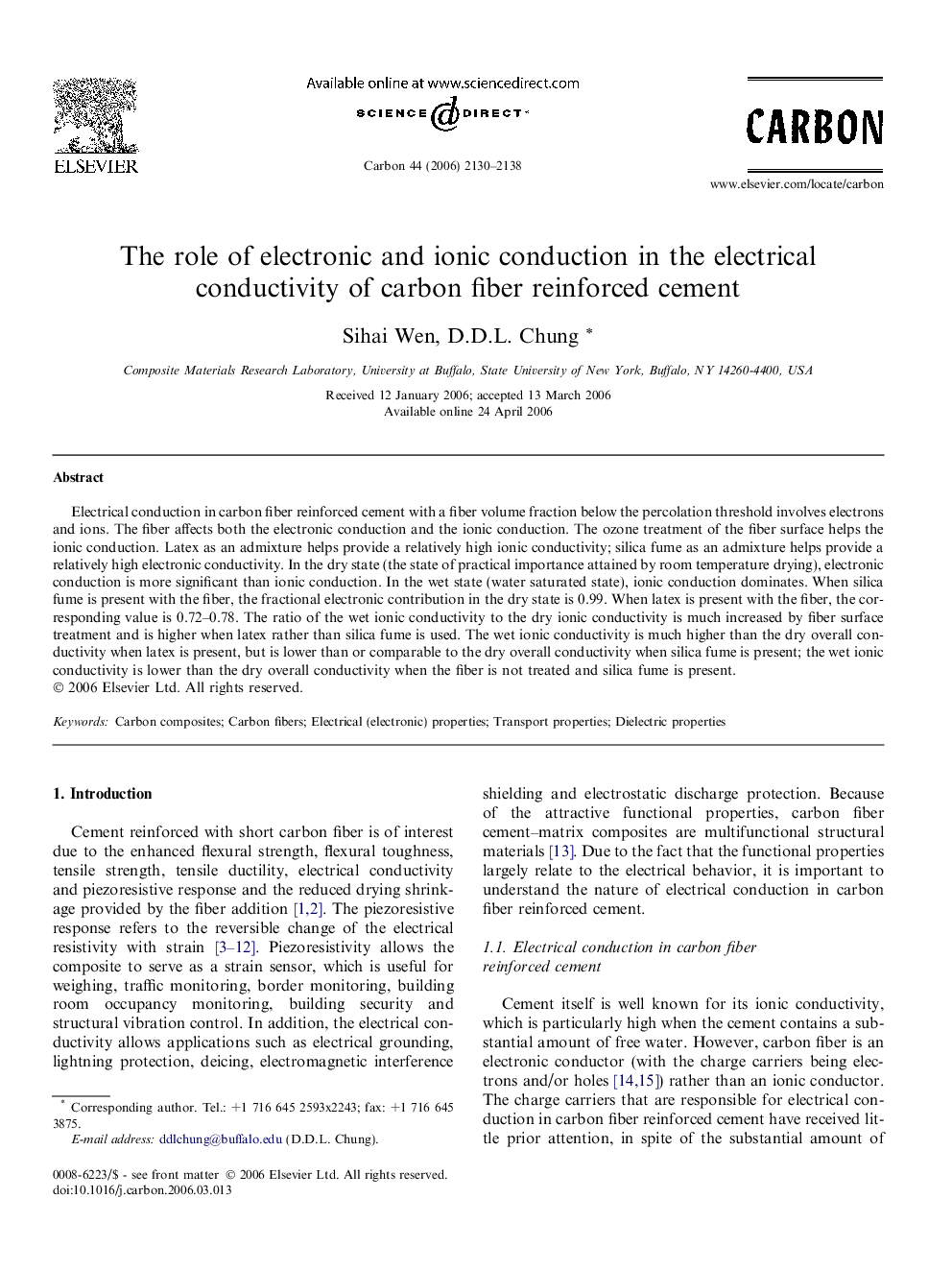| Article ID | Journal | Published Year | Pages | File Type |
|---|---|---|---|---|
| 1419749 | Carbon | 2006 | 9 Pages |
Electrical conduction in carbon fiber reinforced cement with a fiber volume fraction below the percolation threshold involves electrons and ions. The fiber affects both the electronic conduction and the ionic conduction. The ozone treatment of the fiber surface helps the ionic conduction. Latex as an admixture helps provide a relatively high ionic conductivity; silica fume as an admixture helps provide a relatively high electronic conductivity. In the dry state (the state of practical importance attained by room temperature drying), electronic conduction is more significant than ionic conduction. In the wet state (water saturated state), ionic conduction dominates. When silica fume is present with the fiber, the fractional electronic contribution in the dry state is 0.99. When latex is present with the fiber, the corresponding value is 0.72–0.78. The ratio of the wet ionic conductivity to the dry ionic conductivity is much increased by fiber surface treatment and is higher when latex rather than silica fume is used. The wet ionic conductivity is much higher than the dry overall conductivity when latex is present, but is lower than or comparable to the dry overall conductivity when silica fume is present; the wet ionic conductivity is lower than the dry overall conductivity when the fiber is not treated and silica fume is present.
